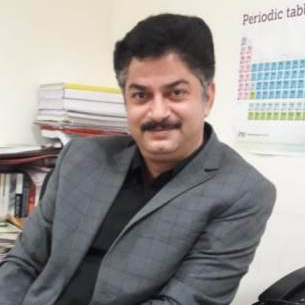Advanced Oxidation Processes (AOPs) for Urban Wastewater Treatment and Re-use
A special issue of Water (ISSN 2073-4441). This special issue belongs to the section "Wastewater Treatment and Reuse".
Deadline for manuscript submissions: closed (30 June 2021) | Viewed by 18650
Special Issue Editors
Interests: environmental hygiene; mineral, thermal, waste water; food hygiene; microbial contaminations; wastewater treatments
Special Issues, Collections and Topics in MDPI journals
Interests: advanced oxidation processes, water reuse, nanotechnology, wastewater disinfection, antibiotic resistance
Special Issues, Collections and Topics in MDPI journals
Interests: aquatic (eco)toxicology; nano(eco)toxicology; toxicant effects on populations; factors modifying toxicity; inorganic water chemistry; wastewater treatment; soil and sediment remediation; recovery and reuse of by-products; water reuse
Special Issues, Collections and Topics in MDPI journals
Interests: heterogeneous and homogeneous (photo-Fenton) photocatalysis; solar photoreactors; solar disinfection; photocatalysts evaluation; wastewater treatment; microcontaminants elimination; photofuels production by photocatalysis
Special Issues, Collections and Topics in MDPI journals
Special Issue Information
Dear Colleagues,
Urban wastewater management and reuse represent a major challenge for economic development and public health. Water scarcities and potential water crises are pushing societies to strengthen water recycle, reuse, saving, and preservation. Demographic growth and economic development will further exacerbate water shortages in the near future further, increasing water demand. At the same time, wastewater is expected to contain huge amounts of new and complex contaminants, like contaminants of emerging concern (CECs), which are always more difficult to treat. Most of these contaminants are only partially removed by current technologies in existing wastewater treatment plants (WWTPs). As a consequence, they can be released in the aquatic environment or spread into the soil, entering the food chain, especially when wastewater is reused for agricultural purposes. In particular, antibiotics and anti-microbial products can lead to direct serious effects on human health due to the widespread of antibiotic-resistant bacteria and antibiotic-resistant genes. These new challenges are pushing urban wastewater treatment towards advanced technologies that are able to increase treated wastewater safety, supporting their reuse. Advanced oxidation processes are promising technologies for removing contaminants, including CECs, but still present some drawbacks like energy cost, by-product formation, reactor geometry optimization, and residual toxicity.
Topics of interest include but are not limited to the following:
- Recent advances in the application of AOPs to wastewater treatment and reuse;
- New materials for the application of AOPs;
- Hybrid treatments;
- Removal of contaminants of emerging concern by AOPs;
- Geometry optimization;
- Toxicity reduction.
Prof. Marco Guida
Dr. Giusy Lofrano
Prof. Giovanni Libralato
Prof. Sixto Malato
Prof. Sanjay Sharma
Guest Editors
Manuscript Submission Information
Manuscripts should be submitted online at www.mdpi.com by registering and logging in to this website. Once you are registered, click here to go to the submission form. Manuscripts can be submitted until the deadline. All submissions that pass pre-check are peer-reviewed. Accepted papers will be published continuously in the journal (as soon as accepted) and will be listed together on the special issue website. Research articles, review articles as well as short communications are invited. For planned papers, a title and short abstract (about 100 words) can be sent to the Editorial Office for announcement on this website.
Submitted manuscripts should not have been published previously, nor be under consideration for publication elsewhere (except conference proceedings papers). All manuscripts are thoroughly refereed through a single-blind peer-review process. A guide for authors and other relevant information for submission of manuscripts is available on the Instructions for Authors page. Water is an international peer-reviewed open access semimonthly journal published by MDPI.
Please visit the Instructions for Authors page before submitting a manuscript. The Article Processing Charge (APC) for publication in this open access journal is 2600 CHF (Swiss Francs). Submitted papers should be well formatted and use good English. Authors may use MDPI's English editing service prior to publication or during author revisions.
Keywords
- Advanced oxidation processes
- Wastewater management
- Wastewater treatment
- Wastewater reuse
- Contaminants of emerging concern









